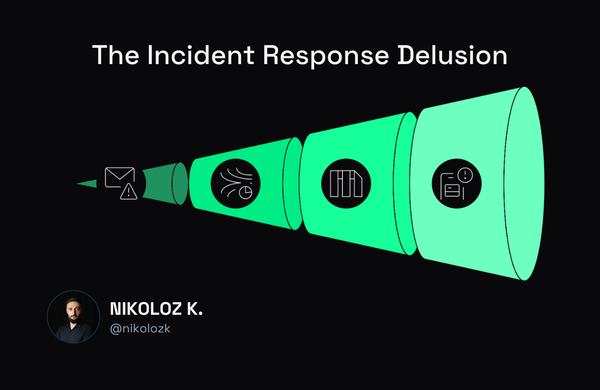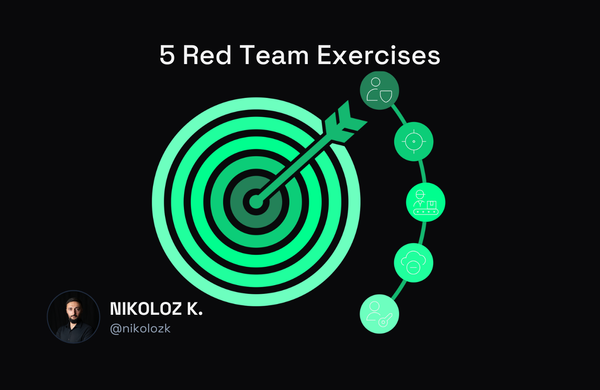The Key Metrics That Define Your Information Security Posture

Nikoloz Kokhreidze
Discover key metrics for assessing information security posture. Learn how to measure User Access Management, Asset Inventory, and more. Drive secure growth.

In today's digitally connected world, organizations need to ensure the security of their data and systems. Implementing an effective information security posture is an essential part of this. It is important to have the right metrics to assess whether the organization is meeting its security goals. In this post, I will discuss the key metrics for evaluating an organization's information security posture, why they are essential, and how to measure them.
Why use metrics?
Metrics are essential for assessing an organization's information security posture, as they help to ensure that the organization is taking the necessary steps to protect its data and systems from security incidents and breaches. Organizations can identify potential risks and develop mitigation strategies by regularly assessing and reviewing metrics.
What are the Key Metrics for Assessing an Organisation's Information Security Posture?
User Access Management: Ensuring that only authorized personnel have access to sensitive data is a key metric. It is essential to have measures and controls in place to ensure that only authorized users have access to the organization's data and systems. This metric can include the number of administrative users, changes in this number, the percentage of systems using two-factor authentication and administrative users per application/system/service.
Asset Inventory: Knowing what the organization owns and wants to protect is paramount to an effective security posture. This includes physical, data, and software assets. Metrics should include asset importance to the organization and Confidentiality, Integrity and Availability requirements, among others.
Vulnerability Management: Identifying exploitable weaknesses on the key systems and patching them as soon as possible is a key metric for assessing security posture. This metric should provide insights into actual business risks derived from system vulnerabilities. By regularly scanning for and patching vulnerabilities, organizations can reduce the risk of attacks and breaches.
Patch Compliance: A patch compliance rate helps to identify the number of systems that have been updated to the latest version of the operating system and other software. This can indicate the speed of patching critical vulnerabilities and identify the gaps in patching processes.
Incident Response: Incident response metrics will help an organization identify improvement points for an incident response plan to quickly and effectively handle any security incidents. This metric shows the number of incidents, their types, severity, sources, targets, success rate and SLA deviations. The incident response metric should also show Mean Time to Detect (MTTD), Mean Time to Resolve (MTTR) and Mean Time to Contain (MTTC).
Adherence to Security Policies and Procedures: This metric can be used to identify areas where employees may struggle to comply with security guidelines and identify opportunities to improve employee training and awareness. You can also use it to track the security training program's effectiveness and identify areas where the organization's security policies and procedures may need to be revised or updated.
Security Awareness: This metric can track the level of security training and awareness among employees and identify opportunities to improve employee understanding of security risks and best practices.
Ideas for Other Metrics
It would be best if you tailored metrics and KPIs for your organization, its priorities and risk appetite. Below you can see other ideas for metrics that might be helpful for your use case:
- Number of successful and unsuccessful login attempts
- Unattended patches and software updates
- Number of data breaches
- Number of malware incidents
- Number of suspicious user activity
- Number of unauthorized access attempts
- Number of vulnerabilities identified
- Number of malicious URLs blocked
- Number of phishing attempts
- Number of malicious emails blocked
- Number of malicious IP addresses blocked
- Number of firewalls and IDS/IPS alerts
- Number of authentication failures
- Frequency of vulnerability scans
- Frequency of security awareness training
- Number of successful and unsuccessful malware scans
- Frequency of Intrusion Detection System (IDS) monitoring
- Frequency of security incident response
- Number of user accounts with elevated privileges
- Number of privileged user accounts with a weak password
Conclusion
In conclusion, organizations need to use security metrics to assess their information security posture to identify potential risks and develop effective mitigation strategies. By regularly tracking and reviewing these metrics, organizations can ensure that they take the necessary steps to protect their data and systems from security incidents and breaches.



